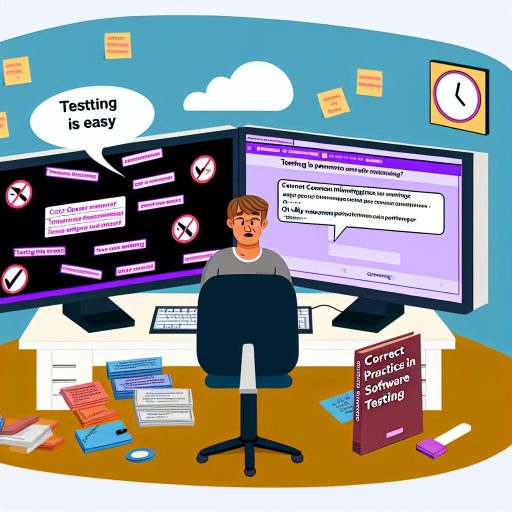Introduction
A Security Operations Center (SOC) Analyst plays a vital role in cybersecurity.
They monitor and defend an organization’s IT infrastructure against threats.
In today’s world, cyber threats are more prevalent than ever.
Thus, the expertise of SOC Analysts is crucial for maintaining security.
The Role of a SOC Analyst
SOC Analysts serve as the frontline defenders of an organization’s digital assets.
They analyze incoming security alerts and investigate potential incidents.
By evaluating alerts, they determine their severity and potential impact.
This quick assessment allows them to act swiftly and mitigate threats.
Monitoring and Detection
Monitoring networks, servers, and applications is a primary responsibility of SOC Analysts.
They use advanced security information and event management (SIEM) tools for real-time monitoring.
These tools help detect unusual patterns or behaviors indicative of cyber attacks.
SOC Analysts also perform log analysis to identify persistent threats.
Incident Response
When a threat is detected, SOC Analysts respond immediately.
They initiate incident response procedures to contain the breach.
Their actions prevent further damage to the organization’s systems.
Moreover, they document each incident for future reference and analysis.
This documentation helps refine their security strategies.
Collaboration and Reporting
SOC Analysts work closely with other IT teams to enhance security measures.
They provide insights on vulnerabilities and recommend improvements.
Regular reports to management keep them informed about security status.
Transform Your Career Today
Unlock a personalized career strategy that drives real results. Get tailored advice and a roadmap designed just for you.
Start NowThese reports highlight trends in attacks and potential areas of vulnerability.
Continuous Learning
Cyber threats evolve constantly, requiring SOC Analysts to stay updated.
They invest time in training and certifications to enhance their skills.
Continuous learning allows them to adopt new tools and methodologies.
This commitment ensures they effectively protect the organization’s assets.
In the digital age, cybersecurity is a top priority for businesses globally.
The Security Operations Center (SOC) serves as the first line of defense against cyber threats.
A SOC Analyst plays a crucial role in safeguarding organizational assets.
The following outlines the key responsibilities of a SOC Analyst, emphasizing their impact on information security.
Monitoring Security Alerts and Events
One of the primary responsibilities of a SOC Analyst is monitoring security alerts.
This task involves continuous surveillance of security systems and logs.
SOC Analysts utilize various tools and technologies to detect anomalous behavior.
They examine logs generated by firewalls, intrusion detection systems, and other security appliances.
Regular monitoring helps identify potential threats before they escalate.
Analysts analyze event data to determine its significance.
They prioritize alerts based on the severity of the threat.
Prompt response to high-severity alerts can prevent significant damage.
Moreover, SOC Analysts establish baseline behavior for systems and users.
This process allows them to identify deviations that may indicate a security incident.
Showcase Your Business Today
Reach thousands of readers actively exploring professional services. Publish your business profile and grow your audience now.
Publish NowBy continuously monitoring for changes, they contribute to proactive threat mitigation.
Analyzing Security Breaches and Threats
Another key responsibility involves analyzing security breaches.
When an incident occurs, SOC Analysts conduct detailed investigations.
They gather evidence, including logs and system data, to understand the breach’s nature.
Analysts assess how the breach occurred and its potential impact.
They identify vulnerabilities that were exploited during the attack.
This analysis helps in formulating appropriate responses and measures to prevent future occurrences.
Additionally, SOC Analysts stay updated on the latest cyber threats.
They research emerging attack vectors and vulnerabilities.
This knowledge enables them to better defend against advanced persistent threats (APTs).
Investigating Incidents and Providing Resolutions
Incident investigation is a critical part of a SOC Analyst’s role.
When an alert indicates a potential security incident, the analyst takes immediate action.
They follow established incident response protocols to assess the situation.
During an incident, analysts gather relevant data from affected systems.
They collaborate with other cybersecurity professionals to analyze the incident thoroughly.
The goal is to contain the incident and minimize damage.
After containment, SOC Analysts work on remediation efforts.
They implement solutions to resolve the immediate threat.
This may involve applying security patches or blocking malicious IP addresses.
Furthermore, they document their findings in incident reports.
These reports provide valuable insights for future reference.
Analyzing past incidents helps organizations improve their security posture.
Implementing Security Measures to Protect Systems
Proactive security is essential in today’s cybersecurity landscape.
SOC Analysts play a vital role in implementing security measures.
They work with IT teams to develop and enforce security policies and best practices.
This includes configuring firewalls, antivirus software, and intrusion prevention systems.
Analysts ensure that security tools are optimally tuned to detect threats.
They also conduct regular updates and patches to ensure systems remain secure.
Moreover, SOC Analysts are responsible for creating security awareness among employees.
They provide training sessions on phishing attacks, social engineering, and other common threats.
An informed workforce significantly enhances an organization’s overall security posture.
Conducting Vulnerability Assessments and Penetration Testing
Regular vulnerability assessments are crucial for identifying weaknesses.
SOC Analysts conduct these assessments to ensure that systems are secure.
They use automated tools to scan networks and applications for vulnerabilities.
Once vulnerabilities are identified, analysts prioritize them based on risk levels.
They recommend remediation strategies to address the most critical findings.
This proactive approach helps organizations reduce their attack surface.
Additionally, SOC Analysts may carry out penetration testing.
This simulated cyberattack assesses the effectiveness of an organization’s security measures.
Analysts determine how well the systems can withstand potential breaches.
Showcase Your Business Today
Reach thousands of readers actively exploring professional services. Publish your business profile and grow your audience now.
Publish NowThe results of these tests provide valuable insights into security flaws.
Analysts compile reports detailing the findings and suggest necessary improvements.
Management uses these recommendations to bolster security defenses.
Key Responsibilities of a SOC Analyst
In the ever-evolving landscape of cybersecurity, the role of a Security Operations Center (SOC) Analyst is crucial.
These professionals stand as the first line of defense against security incidents.
Their responsiveness can significantly reduce the impact of a security breach on an organization.
In this section, we explore the key responsibilities of a SOC Analyst during incident response.
Acting as First Responders to Security Incidents
SOC Analysts play a vital role in the initial detection and assessment of security incidents.
When an alert is triggered by security tools or anomalous activity is detected, they spring into action.
These analysts quickly evaluate the nature and severity of incidents.
Their prompt response can help contain potential threats before they escalate.
By monitoring security alerts, SOC Analysts maintain a vigilant posture against attacks.
They utilize various security information and event management (SIEM) systems for real-time analysis.
Analysts assess logs and alerts from multiple sources including firewalls, intrusion detection systems, and antivirus software.
This diligence allows them to quickly identify genuine threats, distinguishing them from false positives.
Once they have gathered enough information, they prioritize the incidents based on potential risk levels.
Escalating Critical Incidents to Appropriate Teams
Not all incidents require the same level of response; some pose more significant threats than others.
SOC Analysts must be adept at escalation protocols.
They ensure that critical incidents receive immediate attention from specialized teams.
For example, a data breach may require escalation to the incident response team or the legal department.
In making escalation decisions, SOC Analysts evaluate several factors.
They analyze the incident’s potential business impact, the criticality of affected systems, and compliance requirements.
This ensures that the appropriate experts are mobilized to address urgent issues.
Effective communication during this process is essential; clarity helps avoid delays in response actions.
Coordinating with Other Departments to Mitigate Risks
Collaboration is essential in the fight against cybersecurity threats.
SOC Analysts work closely with various departments across the organization.
They often coordinate with IT, legal, and human resources teams during incidents.
This cross-departmental collaboration enhances the organization’s ability to respond effectively to security threats.
For instance, IT staff may need to isolate affected systems quickly.
Meanwhile, legal teams may require information regarding regulatory implications.
Additionally, HR might have to handle insider threats or employee-related incidents.
By fostering these partnerships, SOC Analysts can promote a united front in incident response efforts.
Documenting Incidents and Reporting Findings
Accurate documentation is a critical component of incident management.
SOC Analysts meticulously record details about every incident they handle.
This may include timestamps, affected systems, response actions taken, and escalation decisions.
Such records are invaluable for future reference.
After addressing the incident, analysts compile reports for stakeholders.
These reports provide insights into the incident, its impact, and the response effectiveness.
Clear documentation aids in understanding the incident lifecycle.
It also serves as a basis for reviewing and improving incident response procedures.
Showcase Your Business Today
Reach thousands of readers actively exploring professional services. Publish your business profile and grow your audience now.
Publish NowImplementing Remediation Strategies to Prevent Future Incidents
After an incident is resolved, SOC Analysts focus on prevention.
They analyze the root causes of incidents to identify vulnerabilities.
This analysis often leads to the development of remediation strategies.
These strategies aim to strengthen the organization’s security posture against future threats.
For example, if a phishing attempt led to a security incident, SOC Analysts may recommend increased training.
They might collaborate with the training department to educate employees about identifying phishing attempts.
Additionally, they could suggest implementing more robust email filtering systems.
Furthermore, SOC Analysts conduct post-incident reviews.
These reviews examine what worked well and what could have been done better.
By learning from each incident, they help refine existing security protocols.
Continuous improvement is vital to developing effective incident response capabilities.
Explore Further: Penetration Testing Certifications: CEH vs. OSCP
In today’s digital landscape, security is paramount.
SOC analysts play a crucial role in maintaining the safety and integrity of an organization’s information systems.
One of their essential responsibilities involves collaboration with IT teams.
This synergy helps create a robust defense against cyber threats.
Working Closely with IT Professionals
SOC analysts must work in harmony with IT professionals.
This collaboration ensures a united front against security risks.
By aligning their objectives, both teams can effectively create a secure environment.
Analysts rely on IT staff to understand technical infrastructure, while IT teams count on analysts for security insights.
Effective communication between these groups is vital.
Regular meetings foster relationships and promote information sharing.
By discussing ongoing projects, both teams can align their priorities and address overlapping concerns.
This partnership helps to identify areas that require immediate attention and remediation.
Providing Security Recommendations for Network Infrastructure
SOC analysts evaluate network infrastructure to identify vulnerabilities.
They provide actionable security recommendations tailored to the organization’s needs.
Analysts assess firewalls, routers, and servers, ensuring they operate optimally and securely.
Regular audits are a key component of this process.
Analysts scrutinize logs and configurations for potential weaknesses.
They also work closely with IT professionals to deploy effective security measures.
By optimizing network setup, they help build a resilient infrastructure.
Conducting Risk Assessments and Identifying Vulnerabilities
Risk assessments form a core part of a SOC analyst’s responsibilities.
They evaluate potential threats and their likelihood of occurrence.
Analysts categorize risks by severity, allowing organizations to prioritize responses effectively.
Identifying vulnerabilities is equally crucial.
Analysts use various tools and techniques to discover weaknesses in systems.
Penetration testing serves as one effective method for discovering flaws.
This proactive approach allows organizations to address issues before they can be exploited.
Collaborating with IT teams during these assessments enhances their effectiveness.
IT professionals offer insights into specific systems that require attention.
Together, they can devise strategies to mitigate risks.
Showcase Your Business Today
Reach thousands of readers actively exploring professional services. Publish your business profile and grow your audience now.
Publish NowThis collaboration ensures comprehensive coverage of potential vulnerabilities.
Ensuring Compliance with Security Policies and Regulations
Compliance is another significant responsibility for SOC analysts.
They ensure that the organization adheres to internal policies and external regulations.
This obligation protects the organization from legal repercussions and enhances its reputation.
Analysts familiarize themselves with relevant regulations.
These may include GDPR, HIPAA, or PCI-DSS, depending on the industry.
They also aid in developing and updating internal security policies.
By maintaining these standards, analysts help shield the organization from risks.
The cooperation with IT teams is fundamental in ensuring compliance.
IT professionals implement the necessary systems and processes to support these policies.
Regular audits conducted by SOC analysts help verify adherence.
This methodology helps organizations maintain compliance consistently.
Training Employees on Security Best Practices
Employee training forms a critical part of a SOC analyst’s role.
They are responsible for educating staff about security best practices.
This training empowers employees to recognize potential threats and respond appropriately.
Analysts develop comprehensive training programs.
These programs cover topics like phishing attacks, strong password policies, and data handling procedures.
By enhancing awareness, organizations can significantly reduce risks posed by human error.
Collaboration with IT teams enriches the training process.
IT professionals can provide insights into technical aspects of security.
Together, they can create more effective training materials that resonate with employees.
Engaging sessions help ensure that staff remains vigilant against cyber threats.
Strengthening Organizational Security Through Collaboration
The role of a SOC analyst encompasses various responsibilities.
Their collaboration with IT teams is vital to creating a secure environment.
By working closely with IT professionals, providing security recommendations, conducting risk assessments, ensuring compliance, and training employees, SOC analysts significantly enhance organizational security.
These efforts culminate in robust defenses against ever-evolving cyber threats.
As technology advances, so too must the strategies employed by SOC analysts and IT teams.
Together, they form a formidable barrier, protecting sensitive information and maintaining the integrity of organizational structures.
Collaboration between SOC analysts and IT departments is indispensable.
By fostering a culture of security awareness and proactive measures, organizations can navigate the complexities of today’s cyber landscape.
The partnership not only strengthens defenses but also cultivates a resilient organizational culture that prioritizes security at every level.
Delve into the Subject: Maximizing Sales Through Customer Relationship Management
Responsibilities of SOC Analysts in Threat Intelligence
In today’s digital landscape, organizations face numerous cyber threats.
SOC analysts play a critical role in defending against these threats.
One major aspect of their work involves threat intelligence analysis.
This section outlines the responsibilities of SOC analysts regarding threat intelligence.
Monitoring and Analyzing Threat Intelligence Feeds
Threat intelligence feeds provide organizations with crucial data regarding various cyber threats.
SOC analysts continuously monitor these feeds to stay ahead of potential attacks.
They evaluate information from multiple sources, including:
- Open-source intelligence (OSINT)
- Commercial threat intelligence providers
- Internal incident reports
- Fellow security teams and organizations
By analyzing this data, SOC analysts identify patterns that may suggest ongoing or upcoming attacks.
Showcase Your Business Today
Reach thousands of readers actively exploring professional services. Publish your business profile and grow your audience now.
Publish NowThey also discern the context around each threat.
Such insights allow them to prioritize threats based on their severity and likelihood of exploitation.
Effective monitoring of threat intelligence feeds is essential for proactive defense.
Identifying New and Emerging Threats to the Organization
SOC analysts are tasked with identifying both new and emerging threats that may impact their organization.
They apply various techniques to detect these threats, including:
- Behavioral analysis of potential attackers
- Machine learning algorithms for anomaly detection
- Historical data comparisons to uncover trends
By staying informed about the latest threats, analysts can help the organization adapt to an evolving threat landscape.
Identifying new threats early allows the security team to implement preventative measures.
This proactive approach minimizes risks and can save the organization from costly breaches.
Updating Security Tools and Technologies Based on Threat Analysis
As they gather threat intelligence, SOC analysts must update security tools accordingly.
They assess existing security measures and identify any gaps that may need addressing.
Key considerations when updating tools include:
- Integration of new threat detection mechanisms
- Enhancements to existing firewalls and antivirus solutions
- Implementation of more robust monitoring systems
- Regular updates and patches for software vulnerabilities
By updating security tools based on threat analysis, SOC analysts ensure the organization can defend itself against evolving threats.
They must remain vigilant and proactive in applying necessary improvements to the security posture.
Sharing Threat Intelligence with Other SOC Analysts and Security Teams
Effective communication is crucial for a successful SOC team.
SOC analysts share insights and findings regarding threats with other analysts.
This collaboration helps ensure the entire team is informed about current risks and necessary actions.
Methods of sharing information include:
- Routine meetings to discuss recent threats
- Shared dashboards displaying real-time threat data
- Regular updates via email or internal messaging platforms
Such collaboration fosters a unified front against cyber threats.
When analysts share their expertise and intelligence, they enhance the organization’s overall defense capabilities.
The more connected the SOC analysts are, the quicker they can respond to potential incidents.
Developing Strategies to Defend Against Advanced Threats
As threats grow increasingly sophisticated, SOC analysts must continually refine their defense strategies.
They analyze emerging threat patterns to develop robust countermeasures.
Here’s how they approach strategy development:
- Conducting threat modeling exercises to predict attacker behavior
- Implementing incident response plans tailored to specific threats
- Collaborating with other security professionals for a holistic approach
- Staying updated on industry trends and emerging technologies
By developing effective strategies, SOC analysts help organizations safeguard their critical assets.
They focus on maintaining preparedness for scenarios that could exploit vulnerabilities.
This proactive risk management approach helps secure the organization’s systems and data.
Utilizing Automation and Enhanced Tools
Automation plays a crucial role in threat intelligence analysis.
SOC analysts leverage various tools to streamline their processes.
Automation allows for faster analysis and response times.
Key technologies used include:
- Security Information and Event Management (SIEM) systems
- Threat hunting platforms
- Incident response orchestration tools
These tools enable analysts to collect and correlate data quickly.
By implementing automation, SOC teams can focus on strategic decision-making rather than repetitive tasks.
This efficiency leads to quicker identification of threats and reduces response times.
Threat intelligence analysis is a critical function within a Security Operations Center (SOC).
SOC analysts play an essential role in monitoring, analyzing, and responding to evolving threats.
Their responsibilities encompass a wide range of tasks that help protect organizations from cyber threats.
Through continuous monitoring, threat identification, technology updates, and strategic collaboration, SOC analysts maintain a robust security posture.
Their proactive approach and skilled analysis ensure that organizations remain resilient against potential cyber-attacks.
As threats evolve, so too must the strategies SOC analysts employ.
This ongoing commitment to security is vital for any organization in today’s digital age.
Showcase Your Business Today
Reach thousands of readers actively exploring professional services. Publish your business profile and grow your audience now.
Publish NowUncover the Details: How to Stay Updated with QA Testing Industry News

Security Incident Management
Security incident management plays a critical role in a SOC analyst’s duties.
It encompasses all activities involved in responding to security incidents.
A well-defined process helps organizations mitigate damage and protect sensitive information.
The effectiveness of this process can have significant implications for an organization’s security posture.
Developing Incident Response Plans and Protocols
First, SOC analysts contribute to developing incident response plans.
These plans outline how to handle potential incidents efficiently.
They set clear steps for identifying, mitigating, and recovering from incidents.
Analysts must ensure that these plans are adaptable to various scenarios.
Protocols should include roles and responsibilities for all team members.
Each analyst understands their function within the incident response team.
This clarity helps streamline operations during stressful events.
By having well-established protocols in place, SOC teams can react swiftly and effectively.
Moreover, plans should incorporate relevant tools and technologies.
Analysts evaluate the current security landscape to inform their decisions.
They assess what technologies best fit their organization’s needs.
Regular updates to these plans keep definitions current and relevant.
Participating in Tabletop Exercises and Simulations
Tabletop exercises and simulations prepare SOC teams for real incidents.
During these exercises, analysts practice responding to fictional scenarios.
They can identify weaknesses in their incident response plans.
This practice allows them to refine protocols and strategies actively.
Through these simulations, teams build their confidence and readiness.
They learn how to communicate effectively during an incident.
These exercises are also excellent for nurturing teamwork among analysts.
Furthermore, tabletop exercises facilitate new idea generation.
Teams can brainstorm innovative ways to tackle security incidents.
They explore various response methods and tactics, enhancing overall preparedness.
Responding to Security Incidents in a Timely Manner
Timeliness is crucial when responding to security incidents.
SOC analysts must act quickly to contain incidents and minimize impacts.
A slow response can lead to data breaches and significant financial losses.
When an incident occurs, analysts initiate the response immediately.
They assess the severity and type of incident.
This evaluation aids in determining the best course of action.
Analysts work collaboratively with relevant departments to ensure a coordinated response.
Monitoring systems continually provides real-time data.
This information allows analysts to make informed decisions rapidly.
Quick responses are vital for limiting the spread or impact of malicious activities.
Communicating with Stakeholders During Incident Response
Clear communication is essential during incident responses.
SOC analysts provide updates to key stakeholders frequently.
This ensures everyone involved understands the situation and response efforts.
Showcase Your Business Today
Reach thousands of readers actively exploring professional services. Publish your business profile and grow your audience now.
Publish NowAnalysts create specific communication plans for incidents.
These plans outline what information needs to be shared and with whom.
Keeping stakeholders informed helps maintain trust during challenging times.
Effective communication minimizes confusion and panic.
It enables various teams to work in concert to resolve the situation.
Analysts also ensure that communication is transparent and timely.
Conducting Post-Incident Reviews and Lessons Learned Sessions
After an incident, SOC analysts conduct post-incident reviews.
These reviews assess the effectiveness of the response.
Analysts identify what worked well and what could improve in future responses.
During these sessions, teams discuss their experiences openly.
They can share insights and observations gained during the incident.
Learning from real-life scenarios enhances the team’s overall effectiveness.
Moreover, analysts document these lessons learned.
This documentation serves as a valuable resource for future incidents.
By continuously improving incident response processes, organizations strengthen their cybersecurity posture.
Implementing changes based on post-incident reviews leads to better preparedness.
Organizations can evolve their incident response plans as threats change.
Keeping protocols up to date is essential in a constantly shifting cybersecurity landscape.
Importance of Ongoing Incident Management Evaluations
Security incident management is integral to the responsibilities of SOC analysts.
Developing response plans, performing simulations, and timely responses are crucial components.
Analysts must communicate effectively with stakeholders throughout the process.
Post-incident reviews help organizations grow and adapt.
SOC analysts play a pivotal role in ensuring companies safeguard their vital assets against threats.
A proactive approach to incident management prepares organizations for the unexpected.
Uncover the Details: Building a Personal Brand as a Technology Evangelist
Continuous Improvement in the Role of a SOC Analyst
In the ever-evolving field of cybersecurity, continuous improvement is crucial for SOC analysts.
Their role requires them to stay ahead of emerging threats and trends.
Engaging in ongoing education and professional development helps them maintain their effectiveness.
This section explores the key areas in which SOC analysts can pursue continuous improvement.
Staying Updated on the Latest Cybersecurity Trends and Threats
Cybersecurity threats constantly evolve.
To combat these threats, SOC analysts must stay informed about the latest trends.
Reading reputable cybersecurity blogs, journals, and news sites is essential.
Analysts should also follow industry leaders on social media platforms.
This engagement helps them gain insights into new attack vectors, malware, and defensive strategies.
Participating in webinars and online courses further enriches their knowledge base.
These resources provide real-time information and practical skills.
Additionally, tools and platforms exist that aggregate cybersecurity news, making it easier for analysts to stay updated.
Regularly reviewing threat intelligence reports can also serve as an excellent resource for identifying new risks.
Obtaining Relevant Certifications and Training Programs
Certifications hold significant value in the cybersecurity landscape.
They not only validate skills but also demonstrate commitment.
Showcase Your Business Today
Reach thousands of readers actively exploring professional services. Publish your business profile and grow your audience now.
Publish NowSOC analysts should consider obtaining certifications such as:
- Certified Information Systems Security Professional (CISSP)
- Certified Ethical Hacker (CEH)
- CompTIA Security+
- Certified Information Security Manager (CISM)
These certifications cover various aspects of cybersecurity and incident management.
Participating in training programs enhances their understanding of specific tools and techniques.
Many organizations offer continual training sessions for SOC teams.
Such programs emphasize practical application and hands-on experience.
Participating in Industry Conferences and Workshops
Attending industry conferences exposes SOC analysts to cutting-edge developments.
Conferences like Black Hat, DEF CON, and RSA Conference are highly informative.
Analysts gain not only knowledge but networking opportunities as well.
They can discuss real-world scenarios with peers and industry experts.
Workshops often provide hands-on experience with advanced tools and methodologies.
Participants can engage in scenario-driven learning and collaborative problem-solving.
Joining forums and user groups can expand their knowledge and foster shared experiences.
These gatherings provide invaluable insights into the challenges faced by other organizations.
Conducting Self-Assessments and Performance Reviews
Self-assessment is an effective way for SOC analysts to identify strengths and weaknesses.
By regularly evaluating their skills, they can focus on areas needing improvement.
They can use performance metrics to gauge their responsiveness and accuracy.
Analysts should establish key performance indicators (KPIs) relevant to their roles.
Potential KPIs include:
- Incident response time
- Number of false positives
- Time taken to resolve incidents
- Types of threats successfully mitigated
These indicators help analysts measure their performance objectively.
Regularly reviewing these metrics ensures ongoing growth and development.
Analysts should also seek feedback from peers and supervisors.
Constructive criticism can identify blind spots and can help them refine their skills.
Implementing Feedback from Incident Response Exercises
Incident response exercises play a vital role in continuous improvement.
SOC teams often conduct simulations to practice their response strategies.
After each exercise, analysts must evaluate their performance critically.
They should identify what went well and what could improve.
Implementing feedback from these exercises is essential for enhancing future responses.
Analysts can create a list of actionable items derived from the feedback.
Regularly updating incident response plans and playbooks reflects this continuous improvement process.
Moreover, bridging the gap between theory and practice boosts their confidence.
This proactive approach equips them with the skills necessary for real-world challenges.
Promoting a Culture of Continuous Improvement Within the SOC
Continuous improvement isn’t solely an individual effort; it should be a team ethos.
SOC analysts should foster an environment where learning is encouraged.
Collaborative discussions on recent threats, incidents, and best practices provide growth opportunities.
Mentoring junior analysts can also contribute to their development.
Experienced analysts can share insights and guide newer members through processes.
Developing standard operating procedures (SOPs) based on lessons learned strengthens overall team performance.
Moreover, creating a feedback loop between teams can drive improvement across the organization.
SOC analysts should collect and analyze feedback from other departments affected by security incidents.
Understanding broader impacts enhances their operational strategies.
Showcase Your Business Today
Reach thousands of readers actively exploring professional services. Publish your business profile and grow your audience now.
Publish NowImportance of SOC Analysts
Cybersecurity is essential in today’s digital landscape.
SOC Analysts safeguard organizations against cyberattacks.
Their skills protect sensitive data and maintain trust.
By identifying and mitigating risks, they enhance a company’s security posture.
Their expertise becomes indispensable as threats become more sophisticated.
Career in Cybersecurity
For those interested in technology and security, consider a career as a SOC Analyst.
The demand for skilled professionals continues to rise.
Opportunities exist in various industries, from finance to healthcare.
Engaging in this field offers both challenges and rewards.
A career in cybersecurity can be fulfilling and impactful.
As the digital world expands, the need for cybersecurity experts grows.
SOC Analysts directly contribute to this important mission.
They protect individuals, businesses, and society as a whole.
Taking the first step towards this career can lead to a promising future.
Additional Resources
Computer Systems Analysts : Occupational Outlook Handbook …
Information Security Analysts : Occupational Outlook Handbook …
[E-Books for Sale]
The Big Book of 500 High-Paying Jobs in America: Unlock Your Earning Potential
$19.99 • 500 High-Paying Jobs • 330 pages
Explore 500 high-paying jobs in America and learn how to boost your career, earn more, and achieve success!
See All 500 High-Paying Jobs of this E-Book
1001 Professions Without a Degree: High-Paying American Jobs You Can Start Now
$19.99 • 1001 Professions Without a Degree • 174 pages
Discover 1001 high-paying jobs without a degree! Unlock career tips, skills, and success strategies for just $19.99!




